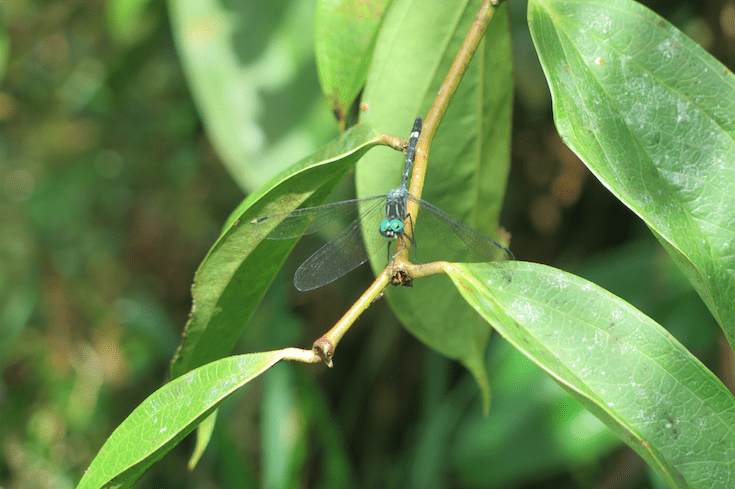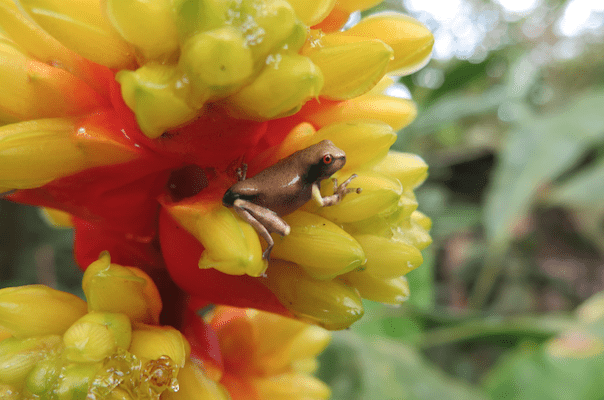Greetings from Canton Mera, Pastaza Region, Ecuador, where the Fundación’s land is located, about 150 kilometres (93 miles) from the equator at the edge of the Llanganates National Park.
We were delighted to welcome two new volunteers to the land this month, Geni and Graham, who both had travelled a long way to help us carry stones, sand and rocks to continue the work on the new pathway! Wilson had joined us again, for a few days so with Pete’s help too, we managed to take the surfacing of the path a goodly distance onwards…………..
However, we did find time to show them round some of the more accessible parts of the land as well, and we also went on a short trek (or mini-canyoning adventure) up a nearby river until the ubiquitous rainstorm stopped play! Many thanks for your help and company.
On the way back down, we were able to spot, under the bridge and just before the waters of the river rose and washed them away, some Guatusa footprints and evidence of some of its more recent meals. The Guatusa (Dasyprocta fuliginosa) is a relatively common large rodent (about the size of a small dog) and we have often seen individuals crossing the road – usually in the late afternoon/early evening.
Another slightly smaller find this month was a young specimen of a Map Tree Frog (Hypsiboas geographica) unusually seen out in daytime. The youngster looks nothing like the adult form and so is often quite difficult to identify – well-spotted, Geni!
It did take our new visitors a little while to acclimatise to the night sounds……. the squeaks, croaks, chirps, night bird calls, occasional rustling sounds, which surround nearly always and which peak and trough according to the time of night, amount of cloud cover, the phase of the moon, humidity, rainfall, etc!
A few more plants were added to the edge of the pathway close to the river in order to help prevent erosion and there is some more work to be done on this yet.
Many birds, as ever, were seen and heard around and over the land- including hawks, kites, tanagers, oropendolos, pavas, the thrush-like wren, amongst others. The myriad of insects – including butterflies and grasshoppers, cicadas and katydids – continue to amaze. There is always something new to see………………



